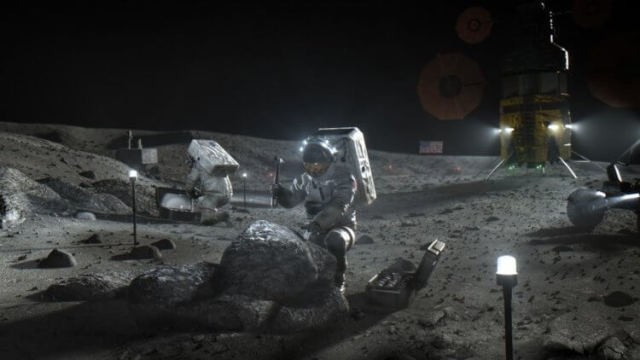The fuel is also planned to be used on other planets
washington, december 16. /TASS/. the united states intends to process uranium for the use of this fuel on the surface of the moon and planets, as well as for space energy. this is stated in the strategy approved on wednesday by us president donald trump in the field of space nuclear energy.
"the ability to safely use space-based nuclear power and propulsion systems is critical to maintaining and strengthening u.s. dominance and strategic leadership in space," the text notes. "This includes radioisotope power systems, fission reactors used to propel spacecraft and other elements. These systems can allow you to work in environments where solar and chemical energy is not enough, they can produce more energy at a lower mass, ..> reduce the flight time of manned and robotic spacecraft."
The strategy, the document says, is necessary for the United States to achieve scientific, exploration, commercial objectives, as well as national security goals.
The United States will " develop uranium reprocessing capabilities that will allow the production of fuel suitable for use on the surface of the moon and planets, in space energy, nuclear electric propulsion systems, thermal nuclear propulsion systems."
"This should support the ability to produce various forms of uranium fuel in accordance with the needs of the mission,"the strategy says." < ... > It is necessary to create technical capabilities, including by identifying and solving major technical problems, which will help thermal nuclear propulsion systems meet the future requirements of the Ministry of Defense and the National Aeronautics and Space Administration (NASA) for the mission."
The research program of the moon
In the spring of 2019, NASA announced the project of the lunar program Artemis, which will consist of three stages. The first of them (Artemis 1) provides for an unmanned flight of the Orion spacecraft installed on the Space Launch System (SLS) rocket around the Moon and its return to Earth. The second stage (Artemis 2) is a flyby of the Earth's natural satellite with a crew on board. In the third phase of the mission (Artemis 3), NASA expects to land astronauts on the Moon in 2024, and then send people to Mars approximately in the mid-2030s.
NASA plans to name crew members for the Moon flyby in 2021, and the crew of the expedition that will land on the moon will be named later.
In May 2020, NASA presented the basic principles on which the proposed international agreement on the development of the moon will be built. the artemis agreements, named after the lunar program, are a series of bilateral treaties between the united states and partner countries. The principles of the 1967 Outer Space Treaty are largely taken as a basis. Among the listed principles, NASA called, in particular, provisions on the extraction of resources on the Moon and the idea of creating so-called security zones that should prevent "malicious interference".

